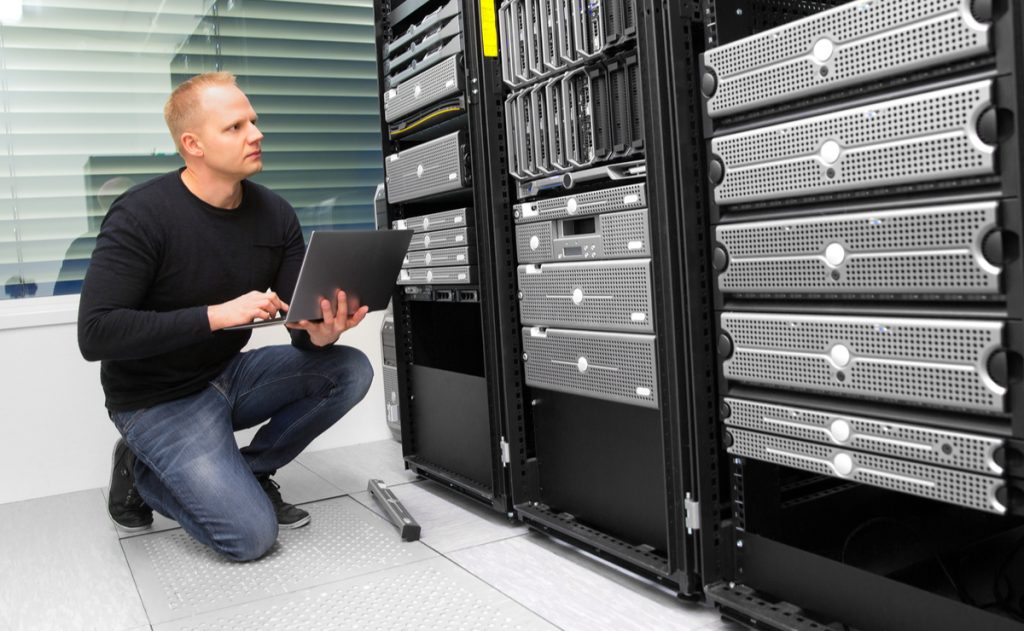A disaster recovery solution protects data and systems from damage or loss. It minimizes downtime caused by an outage or natural disaster and helps businesses return to normal operations quickly.
COVID-19 has shifted how employees work remotely, making it important to have a backup and recovery solution in place for remote workers. Consider the following solutions to meet your disaster recovery needs:
1. Backup and Restore
Disaster recovery is a process of maintaining or resuming critical business operations after a disruption. Whether due to a natural event, hardware failure, human error, or malware infection, a disaster can bring your systems down and halt business productivity.
Data backup and recovery are essential for any DR plan. Data backup is the copying and archiving of computer data so that it can be restored in case of data loss or corruption.
DR solutions like Zerto, Arcserve, and Carbonite offer cloud-based backup solutions that protect business applications, workflows, and sales operations from malware infections or other cybersecurity threats. They also help businesses meet RTO and RPO objectives. Their solutions support a wide range of platforms and devices, including VMware, Hyper-V, and IBM systems workloads.
2. Recovery Time Objective (RTO)
Achieving RTOs requires a comprehensive disaster recovery solution that includes redundant systems and a backup and disaster recovery plan with continuous replication. But determining an RTO isn’t a solitary project—it involves evaluating which data, systems and applications are the most critical to business operations and deciding what level of downtime can be tolerated.
RTOs and RPOs are important metrics, but they’re different from one another. While RTO focuses on downtime of services and applications, RPO defines how much data you’re willing to lose when a disaster occurs. The difference can be the difference between irritated users and missed sales and revenue. Both RTO and RPO are critical to business continuity. However, an impressive RTO that can’t be met won’t do you any good in a disaster.
3. Recovery Point Objective (RPO)
RPO defines the maximum amount of time that you can tolerate data loss after an outage. This can be an important metric when choosing backup and recovery software that can provide you with a fast restore option.
For example, if your files are updated every hour and you back up once per day, you can lose five hours worth of data updates in the event of a disaster. However, if you back up your data more frequently, the maximum RPO you could experience in the event of a disaster would be much lower.
RPO and RTO are critical factors when creating a business continuity plan (BCP). These metrics help enterprises determine their limitations to make informed decisions about the best disaster recovery solutions. By setting realistic RTO and RPO goals, enterprises can choose the best backup solutions and replication tools for their business needs.
4. Recovery Time Guarantee (RTG)
From a natural disaster to an employee accidentally deleting or ransomware encrypting critical data, disruptions are inevitable and unpredictable. In today’s digital marketplace, there is little tolerance for transaction delays or service-level gaps, but determining your RTO and RPO can help you determine which processes and recovery systems need to be in place to ensure that you return your systems and data to pre-disruption status.
Depending on your business and the criticality of your systems, it may be necessary to achieve shorter RTOs. However, achieving those targets with traditional backup solutions requires more storage and network resources, which can quickly eat into your budget. To reduce costs and improve performance, consider a cloud-native disaster recovery solution with a point-in-time recovery. This allows you to recover from any point in time, reducing RTOs and saving up to 50% on TCO.
5. Business Continuity Plan (BCP)
A business continuity plan is the subset of disaster recovery that moves beyond recovering technology services to getting employees back to work at their desks with the systems, networks and data they need. It also ensures that critical business processes continue uninterrupted, communication with clients and customers resumes, the website remains online and other key functions continue functioning.
A good BCP will involve a team that includes members from every area of the organization. This team will identify risks, develop safeguards and procedures, test and revise the plan on a regular basis.
This process typically involves a Business Impact Analysis (BIA) and the development of protocols for rapid relocation, remote working, and staffing strategies. Having an effective BCP demonstrates to customers and stakeholders that you take your commitment to disaster recovery seriously.

